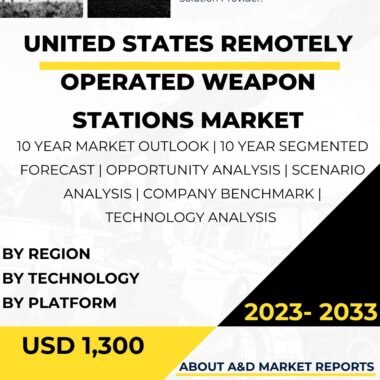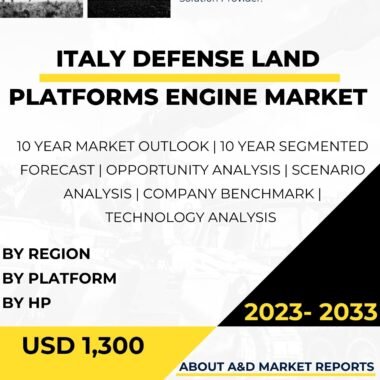Description
The armored vehicle market in Malaysia has experienced notable growth in recent years, driven by the country’s ongoing efforts to modernize its defense capabilities. As a Southeast Asian nation with strategic geopolitical importance, Malaysia places significant emphasis on its armed forces to ensure territorial security and protect national interests. The acquisition and development of armored vehicles play a crucial role in achieving these objectives, as they offer mobility, firepower, and protection for military personnel and assets in various operational scenarios.
The Malaysian Armed Forces have been actively investing in a diverse range of armored vehicles, including tanks, armored personnel carriers (APCs), infantry fighting vehicles (IFVs), and mine-resistant ambush-protected (MRAP) vehicles. These acquisitions are driven by a combination of factors, such as the need to replace aging equipment, respond to emerging security threats, and bolster the country’s domestic defense industry.
One of the primary drivers for the growth in the Malaysian armored vehicle market is the evolving security landscape in the region. As neighboring countries continue to modernize their militaries, Malaysia seeks to maintain a credible deterrent and uphold its defense readiness. This necessitates the acquisition of modern and versatile armored vehicles equipped with advanced technologies and weapon systems.
Another key factor contributing to the expansion of the armored vehicle market in Malaysia is the government’s commitment to enhancing domestic defense capabilities. The country’s defense industry has been progressively developing, with a focus on indigenous production and technology transfer. Collaborations between local defense firms and international manufacturers have led to the production of armored vehicles within Malaysia, fostering economic growth and reducing reliance on foreign imports.
In addition to domestic production, Malaysia has also engaged in several international procurement contracts to bolster its armored vehicle fleet. These agreements involve partnerships with established defense suppliers to acquire sophisticated and battle-proven platforms. By diversifying its sources of armored vehicles, Malaysia aims to create a comprehensive and robust defense fleet capable of responding to a wide range of operational scenarios.
The Malaysian Army, in particular, has been at the forefront of modernization efforts, prioritizing the acquisition of advanced armored vehicles. As the largest component of the country’s armed forces, the Army plays a crucial role in safeguarding national security and responding to internal and external threats. To achieve this, the Army has been upgrading its armored vehicle fleet, introducing new technologies, and integrating modern communication and command systems to enhance battlefield effectiveness.
The deployment of armored vehicles extends beyond conventional warfare scenarios. In recent years, Malaysia has also utilized these vehicles in humanitarian and disaster relief operations. The mobility and protection offered by armored vehicles are invaluable in reaching affected areas, delivering aid, and ensuring the safety of relief personnel.
While the growth in the armored vehicle market brings numerous benefits, it also presents challenges. One significant challenge is balancing the acquisition of modern equipment with budgetary constraints. The costs associated with procuring and maintaining armored vehicles can be substantial, requiring careful planning and prioritization of defense expenditure.
Moreover, as the technological landscape evolves rapidly, ensuring that armored vehicles remain relevant and adaptable to emerging threats is vital. Regular upgrades and improvements to existing platforms are necessary to maintain their operational effectiveness over time.
The adoption of armored vehicles also necessitates a focus on training and skill development for military personnel. Operating and maintaining these complex systems require specialized knowledge and expertise. Therefore, investing in comprehensive training programs is essential to maximize the potential of armored vehicles and optimize their contribution to national defense.
In conclusion, the armored vehicle market in Malaysia is witnessing significant growth, driven by the nation’s commitment to modernizing its defense capabilities and fostering a domestic defense industry. As the security landscape continues to evolve, armored vehicles play a critical role in maintaining the country’s defense readiness and protecting its national interests. By investing in a diverse range of platforms, collaborating with international partners, and developing indigenous capabilities, Malaysia aims to build a robust and versatile armored vehicle fleet capable of meeting present and future challenges.




